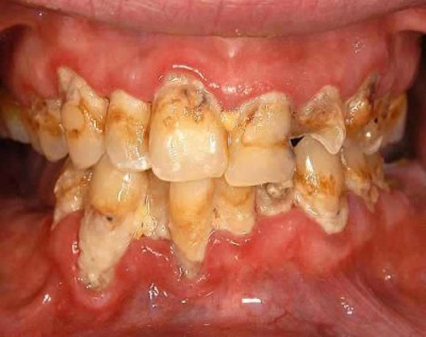A new study funded by the National Institute on Drug Abuse (NIDA) documents the high rates and unique patterns of dental decay and gum disease in people who use the illicit drug methamphetamine. The large study of 571 methamphetamine users found that 96 percent had experienced dental cavities and 58 percent had untreated tooth decay. Only 23 percent retained all of their natural teeth, compared to a tooth retention rate of 48 percent among the U.S. general population. The study was conducted by investigators at the University of California, Los Angeles (UCLA).
The study found that adults reporting moderate or heavy methamphetamine use were twice as likely to have untreated dental cavities than were light users (less than 10 days of use over the past month). Older subjects (ages 30+), women, and current cigarette smokers were disproportionately affected by dental and periodontal disease. In addition, a significant percentage of participants (40 percent) indicated they were often self-conscious or embarrassed due to the condition of their teeth or dentures.
The UCLA researchers emphasized that the high rates and distinctive patterns of cavities could be an important signal to alert dentists to possible methamphetamine use in their patients and the need for a comprehensive treatment that identifies and addresses both their methamphetamine use and oral health problems.
For a copy of the abstract published in the Journal of the American Dental Association go to http://jada.ada.org/article/S0002-8177(15)00977-0/fulltext.
To learn more about methamphetamine, go to https://www.drugabuse.gov/drugs-abuse/methamphetamine.
For more information, contact the NIDA press office at media@nida.nih.gov or 301-443-6245.

